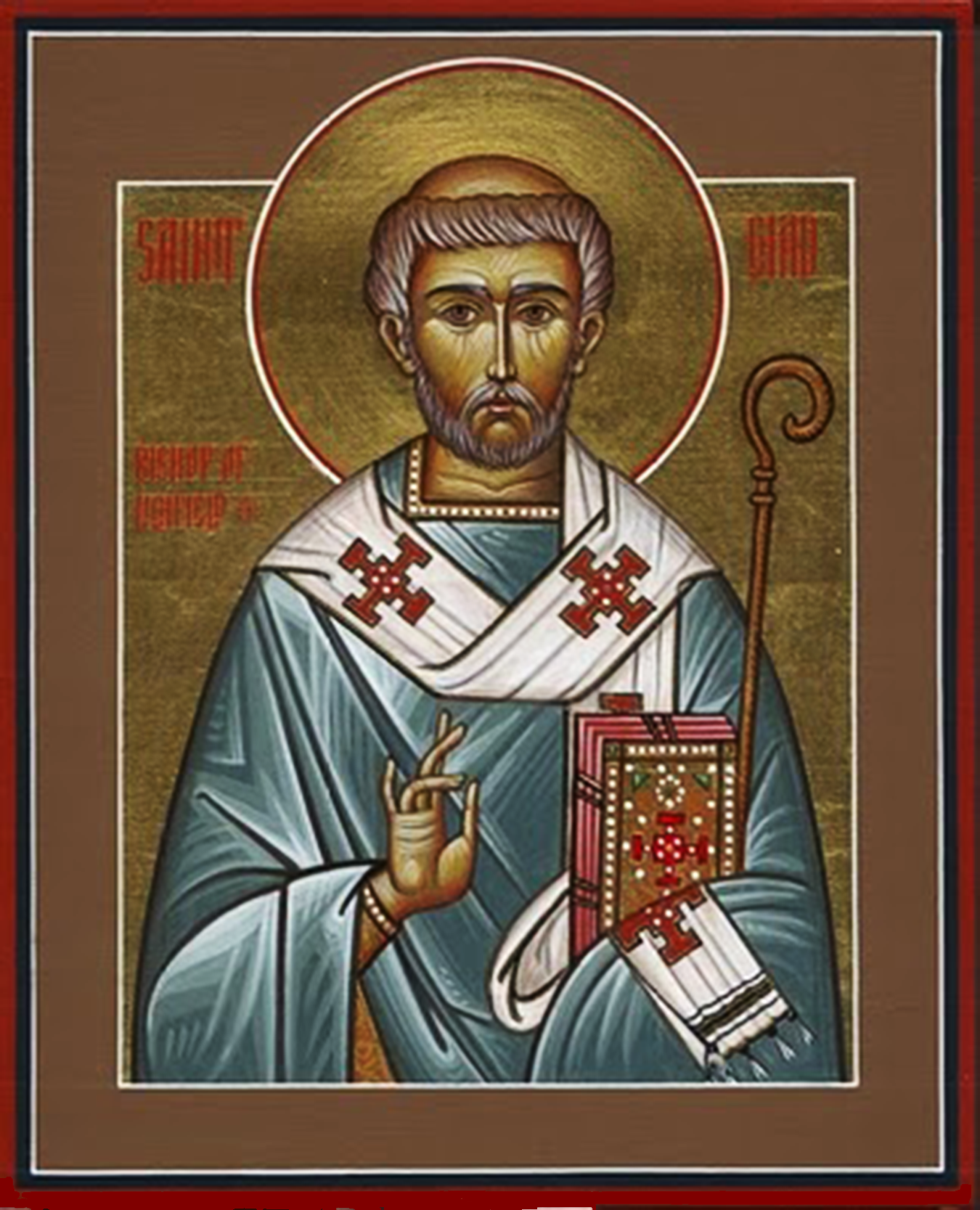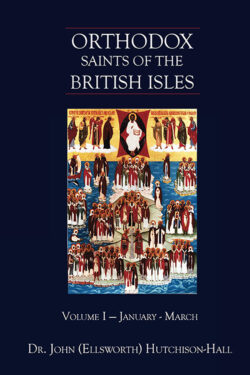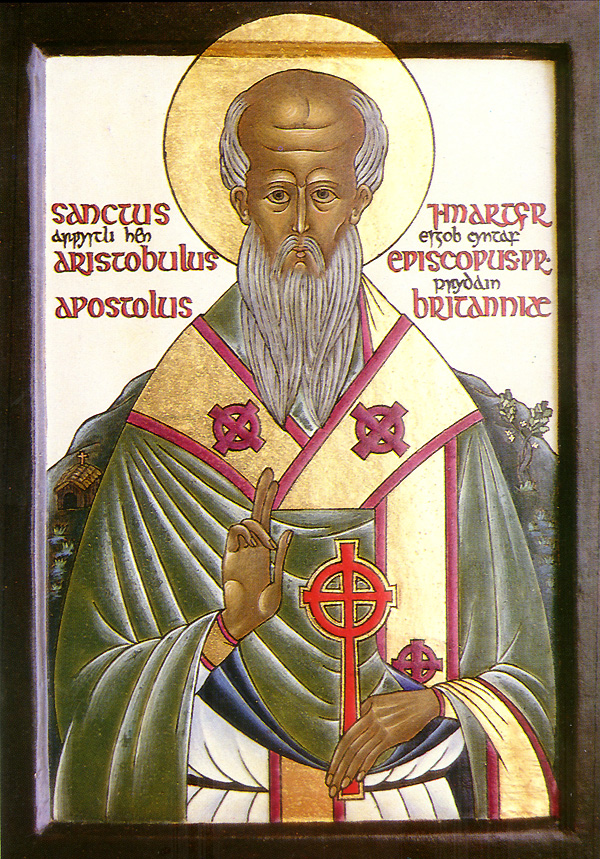
Orthodox Saints of the Pre-Schism
See of Rome
15th March (NS) — 2nd March (OS) 2024
CEADDA (CHAD) of LICHFIELD, A brother of St. Cedd of London (26th October), pupil of St. Aidan at Lindisfarne, who later studied in Ireland. On St. Ceadda’s return to England he was made Abbot of Lastingham, where he became known for his ability as a pastor and holiness of life. During St. Wilfrid’s (12th October) absence in France, St. Ceadda was irregularly consecrated Bishop of the Northumbrians, with his See at York in St. Wilfrid’s place. However, upon St. Wilfrid’s return, Archbishop St. Theodore of Canterbury (19th September) denied the legitimacy of St. Ceadda’s consecration, and, with great humility, St. Ceadda accepted this decision and retired to Lastingham. Impressed by his action, St. Theodore regularized his consecration and made him Bishop of Lichfield. St. Ceadda was a tireless evangelist and journeyed as far as north Lincolnshire in spreading the Gospel, and is said to have founded the monastery at Barrow. St. Ceadda reposed in 673 during the great pestilence, leaving behind a reputation for zeal and devotion. He was buried at the Cathedral in Birmingham, where his relics are preserved to this day.
CYNIBIL (CYNEBILL, CYNIBILD), a brother of SS. Ceadda (Chad) of Lichfield (vide supra), and Cedd of London (26th October), and of the Priest Caelin, all of whom worked to enlighten England. Amongst their works was the founding of the monastery at Lastingham. St. Bede the Venerable (25th May) comments on how unusual it was for four brothers to all enter the priesthood, two of them becoming bishops. The exact year of St. Cynibil’s repose in the seventh century is unknown.
FERGNA, called ‘the White’, he was a relative, disciple, and successor of St. Columba (9th June) as Abbot of Iona. St. Fergna reposed, as Abbot of Iona, 637.
GISTILIAN (GISTLIAN), St. Gistilian was the uncle of St. David of Wales (1st March), as well as a monk at St. David’s — Menevia. There is no further information on this saint extant.
JOAVAN, a native of Britain, St. Joavan went to live with his uncle St. Paul of Léon (12th March) in Brittany. St. Paul later consecrated St. Joavan bishop. St. Joavan reposed circa 570. There are several churches in Brittany dedicated to him.
JOVINUS and BASILEUS, two Christian men who were martyred circa 258, in the persecutions during the reign of Emperor Valerian (r. 253–260). They were buried alongside the Latin Way in Rome.
MARTYRS of CAMPANIA, a group of over four hundred martyrs in Campania under the Lombards, circa 579. The story of their martyrdom was memorialised by St. Gregory the Dialogist (3rd September). Some sources, including English Roman Catholic priest and renowned hagiographer Fr. Alban Butler (†1773), list them as the "Martyrs under the Lombards".
MARTYRS of PORTO ROMANO, a group of martyrs, during the Diocletianic Persecution (303–313). Nothing is known today, but the names of these four:
Heraclius, Januaria, Paul, and Secondilla.
SLEBHENE (SLEBHINE), an Irishman who was a monk at Iona, St. Slebhene served as its fifteenth abbot from 752 until his repose 767.
WILLEIC, an Englishman who was a disciple of St. Swithbert (1st March). St. Willeic also served as Prior and later Abbot of Kaiserswerth near Düsseldorf. St. Willeic reposed in 726.
Get your copy of Orthodox Saints of the British Isles today.
Available at Amazon or your favourite e-bookstore.
ARISTOBULUS of the SEVENTY, (First Century), the Holy Apostle Aristobulus of the Seventy, Bishop of Britain is traditionally numbered as one of the Seventy Apostles, and is the Aristobulus mentioned by St. Paul (29th June) in his epistle to the Romans (16:10). According to tradition, St. Aristobulus was consecrated bishop by St. Paul and sent to Britain where he worked to enlighten the pagan population and ultimately met his martyrdom.
LEOCRITIA (LUCRETIA), raised as a Muslim in a wealthy Moorish family, St. Leocritia converted to Christianity. Upon learning of her conversion, her family banished her from their home. St. Leocritia was sheltered by St. Eulogius (11th March), from whom she also received monastic tonsure. In time they were arrested and convicted, St. Leocritia for apostasy, St. Eulogius for proselytisation. They were then scourged and finally beheaded in 859. They too are numbered amongst the The Martyrs of Córdoba.
MANCIUS, a native of Rome who was bought as a slave by Jewish traders and taken to Evora in Portugal, there he was martyred by his new owners. The dates St. Mancius flourished are uncertain, but most likely in the fifth or sixth century.
PROBUS, a Bishop of Rieti in Latium (the environs of present-day Rome). St. Gregory the Dialogist (3rd September) testifies to St. Probus’ sanctity in the fourth book of his Dialogues. St. Probus reposed circa 571.
SPECIOSUS, a wealthy landowner from Campania (southern present-day Italy) who renounced the world and joined the Abbey of Monte Cassino with his brother Gregory. There both brothers received monastic tonsure from St. Benedict (21st March). St. Specious was later sent to the new foundation at Terracina. St. Specious reposed in Capua in Campania circa 555 whilst undertaking abbey business there.
ZACHARIAS (ZACHARY), 91st Pope of Rome from 741 until his repose in 752. He was born in San Severino in Calabria, his family was of Greek heritage. St. Zacharias was particularly concerned with the restoration of the churches of Rome, and restored the Lateran palace using much of his personal wealth. He also translated to the Church of St. George in the Velabro neighbourhood of Rome, the head of the Great-martyr, Victory-bearer and Wonderworker George, which had been discovered at the Lateran Palace during restoration. St. Zacharias translated the Dialogues of St. Gregory the Dialogist (3rd September) into Greek as well, which proved to be quite popular in the Eastern parts of the Roman Empire.
Prior to the Schism the Patriarchate of Rome was Orthodox, and fully in communion with the Orthodox Church. As Saint John of Shanghai and San Francisco +1966 said “The West was Orthodox for a thousand years, and her venerable Liturgy is far older than any of her heresies”.
Details of British Saints excerpted from Orthodox Saints of the British Isles.
Details of continental saints from these sources.
In many cases there are several spelling versions of the names of saints from the British Isles. I use the Oxford Dictionary of National Biography version as the primary version with the more prevalent version in parenthesis e.g. Ceadda (Chad) of Lichfield.



